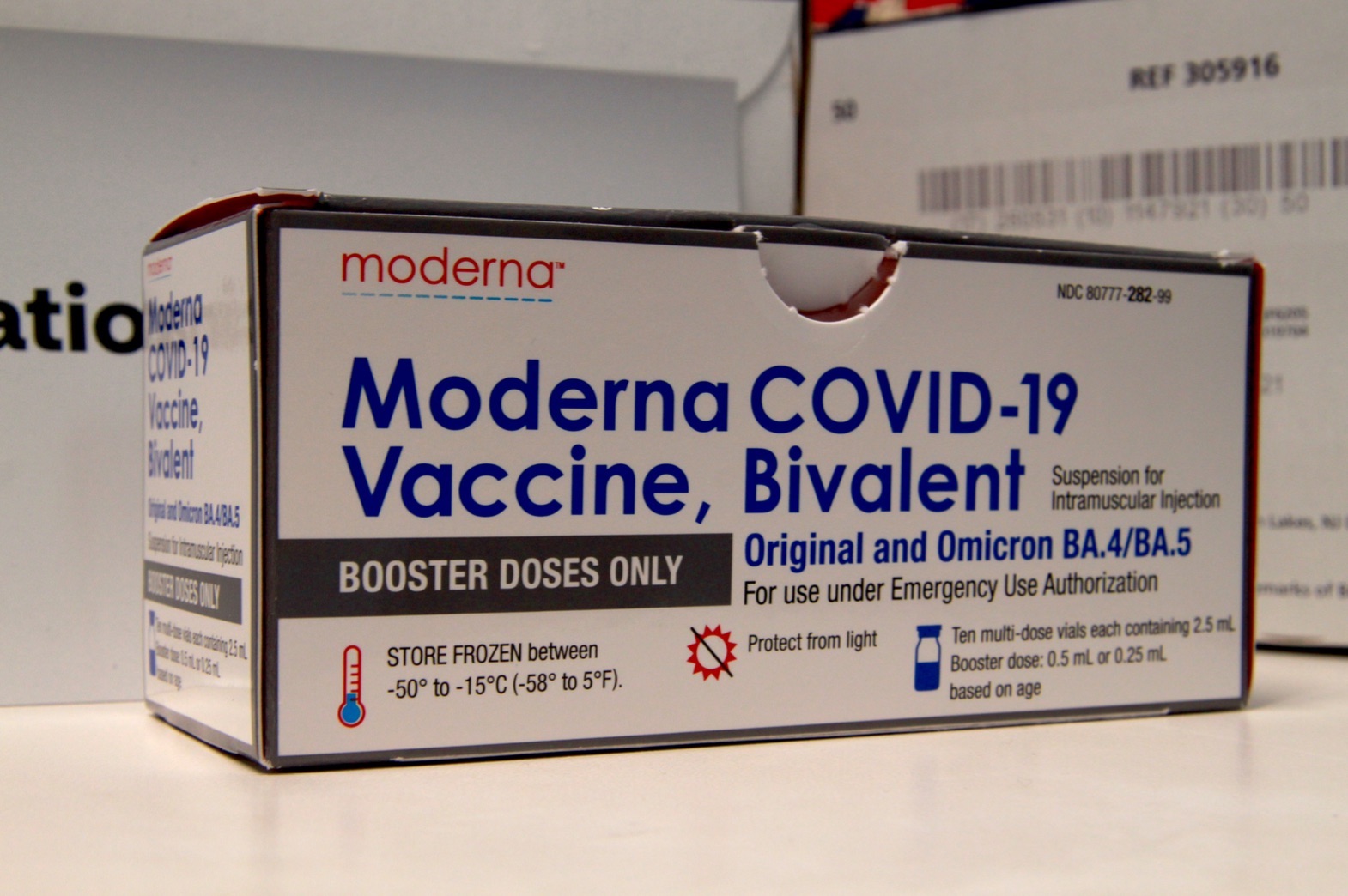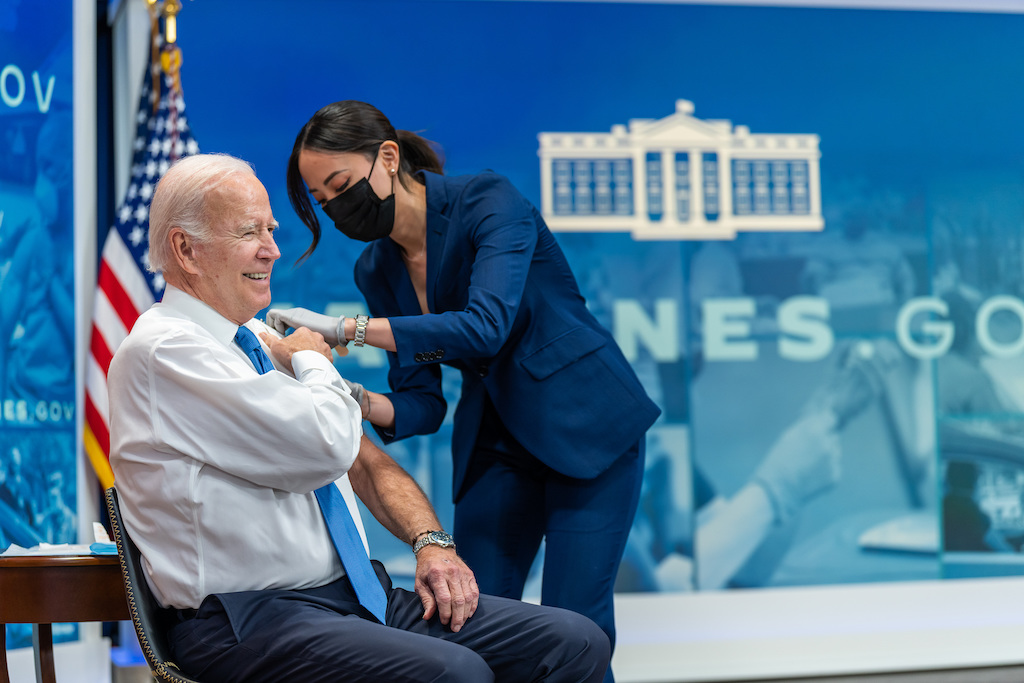WASHINGTON – Some researchers and medical professionals are worried about newly discovered Omicron subvariants potentially causing one of the most dangerous waves of the pandemic yet. But public health agencies, like the Centers for Disease Control and Prevention (CDC), aren’t sounding any alarms.
The differences underscore the all-too-familiar problem of mixed messaging when it comes to COVID-19.
Contrary to popular belief, and the downward trend of cases in the country at the moment, many health officials agree that the pandemic is not over.
Omicron, a highly mutable variant of the SARS-CoV-2 virus, is one of five “variants of concern” recognized by the World Health Organization (WHO). It currently dominates the over 97 million recorded COVID infections in the U.S. as of Nov. 2, according to a CDC tracker.
But as more variants emerge, even the simplest of terms like “concern” or “fast-spreading” appear to be vastly misinterpreted.
During Omicron’s peak midway through the summer, a Daily Beast article called subvariant BA.5 “the most dangerous one yet,” quoting health experts.
In other reports online, including Forbes articles and Twitter threads, many have continued to draw attention to the subvariants’ potential threat, claiming U.S. officials have not properly prepared the country for the advent of newer Omicron spawns, like XBB, BQ.1 and BQ.1.1.

“I don’t think it’s a panicking time,” said David Wentworth, chief of the Virology, Surveillance and Diagnosis Branch of the CDC’s Influenza Division. “We do have variants that are emerging, but they are sublineages of the Omicron umbrella. So, they’re all antigenically related to each other.”
Antigenic, Wentworth said, means that even if the names are different, the protein spikes could look similar.
“They have a similarity that your immune system recognizes,” Wentworth said.
The XBB subvariant, a hybrid of two Omicron strains, however, has been called “an evolving threat” by Fortune magazine due to its ability to “escape immunity” in certain cases.
In August, international public health agencies released statements about the increasing cases of Omicron subvariants, such as XBB.
The CDC encouraged people to get vaccinated in September but continues to leave out XBB data from its Nowcast due to the small percentage or infrequency of the subvariant in the country, according to their website.
Similarly, wastewater surveillance found traces of BQ.1 and BQ.1.1 in the United States in early September, following prior communications from the WHO Regional Office for Europe. As of Oct. 29, the CDC’s Nowcast, which the agency says “enables timely public health action,” shows BQ.1 and BQ1.1 accounts for 14% and 13.1% of cases, respectively, in this country.
However, this information is new to most people, Dr. Eric Feigl-Ding, an epidemiologist and co-founder of a nonprofit public health organization, the World Health Network (WHN), told Capital News Service.
Feigl-Ding and some other health experts on Twitter have called out the CDC in the past few weeks for “purposely” withholding information about these “deadly” variants from the agency’s Nowcast up until recently. He said the CDC is now having to “backfill” data, leaving many to question the CDC’s ability to prepare the country for another wave.
But Wentworth disputed that characterization.
“We have nothing to hide,” Wentworth said in an interview with CNS. He added that the CDC’s rule is to input variants of concern only after they’ve accounted for at least 1% of cases.
The Nowcast page also says that it takes two to three weeks to update it, as the agency has to aggregate all of the wastewater surveillance data.
That bothers Brian Castrucci, president and CEO of the de Beaumont Foundation, a private foundation focused on improving the public’s health. He has worked toward bridging the gap between the scientific community and the public. He is also a father of two, a heart attack survivor, a diabetic and a chronic obstructive pulmonary disease (COPD) patient.
“I look at the (COVID) messaging as that person, and I don’t even know what to do,” Castrucci said. “What’s the truth?”
The CDC and other public health organizations are not denying that there may be another spike in cases. In fact, the CDC has even noted on its website that breakthroughs are possible.
On the same web page, however, the CDC says the Omicron variant has proven to cause “less severe illness and death,” unlike the Delta variant.
“If you can’t communicate logistics, then it makes it very hard to act on,” Castrucci said.
With the updated vaccines, also called bivalent boosters, in addition to the preliminary vaccines and boosters, the CDC said people have a greater chance of warding off a COVID-19 infection.
“They can help restore protection that has waned since previous vaccination and were designed to provide broader protection against newer variants,” CDC Director Dr. Rochelle Walensky said in a statement on Sept. 1. “This recommendation followed a comprehensive scientific evaluation and robust scientific discussion. If you are eligible, there is no bad time to get your COVID-19 booster and I strongly encourage you to receive it.”
Still, with anti-vaccine sentiments and vaccine hesitancy posted on social media, it’s harder than ever for health agencies, like the CDC, to reach the public.
“It’s not that we have people who are anti-science,” Castrucci said. “It’s that people are now finding scientists who agree with them.”
In July, Texas doctor Mary Talley Bowden was suspended from Twitter after the social media platform said she posted “misleading and potentially harmful information related to COVID-19.”
“127 deaths reported to VAERS in children 6 months to 17 years. Pull them off the market. #StoptheShots,” she said.
According to an article by investigative reporter Emily Miller, Bowden has treated over 4,000 COVID-19 patients and has told over 120,000 of her Twitter followers to not get vaccinated.
“If you don’t think that this is still a big problem, and it’s not that serious, you’re going to be attracted to that stream of information,” said Cynthia Baur, director of the Horowitz Center for Health Literacy at the University of Maryland School of Public Health.
On Oct. 12, the U.S. Food and Drug Administration (FDA) announced the approval for anyone over the age of five to get the Moderna and Pfizer bivalent boosters.
The Maryland Department of Health told Capital News Service on Oct. 19 that the vaccines and boosters are “available widely in the state,” and that they will make Marylanders “COVIDReady.”
The following day, the state’s Department of Health sent out an automated text message to over 2 million people, saying that more than 522,000 Maryland residents have already received the bivalent booster shot.
“Don’t miss out on the holidays and schedule your booster today by visiting covidvax.maryland.gov,” the message said.
Overall, nearly 23 million Americans have received the updated booster as of Oct. 27 since the vaccine’s initial distribution, which is a slower pace than in the first couple of months after the original mononuclear vaccine doses came out.
The public is not really familiar with the medical terminology, Castrucci said.
“Bivalence? What does that even mean?” he said.
Searches for the meaning of bivalent vaccines on Google.com have spiked dramatically.
“And then also within our own ranks of medicine and public health, you have people speaking out against vaccination, making the scientific community seem to be imperiled in their own perception of the safety of the vaccine,” Castrucci said.
On Oct. 17, White House COVID-19 Response Coordinator Dr. Ashish Jha and federal public health officials met with leading health organizations to discuss ways they are managing and communicating information about the pandemic, especially as cases of influenza begin to surge.
“Administration officials called on the organizations to ensure their members are doing everything they can to get Americans their updated COVID-19 vaccine and flu shots this fall, including through individual patient counseling, as well as phone calls, emails, and text reminders to patients,” a White House statement said.
President Joe Biden also delivered remarks on Oct. 25 on the status of the country’s fight against COVID — a stark contrast from where he thought the country was just one month ago when he claimed in a “60 Minutes” interview that the pandemic was over.
“We still have hundreds of people dying each day from COVID in this country — hundreds. That number is likely to rise this winter,” Biden said. “But this year is different from the past. This year, nearly every death is preventable.”
The president also provided information about the frequency of the updated booster shots.
While more high-risk people, such as those who are immunocompromised or elderly, may need to get more than one shot, most Americans, he said, will only need one each year.
Castrucci said it’s important that the public health community finds a way to agree on “clear, consistent messaging” as the pandemic continues.
“If you can’t trust anyone,” Castrucci said, “you will fall for anything.”


You must be logged in to post a comment.